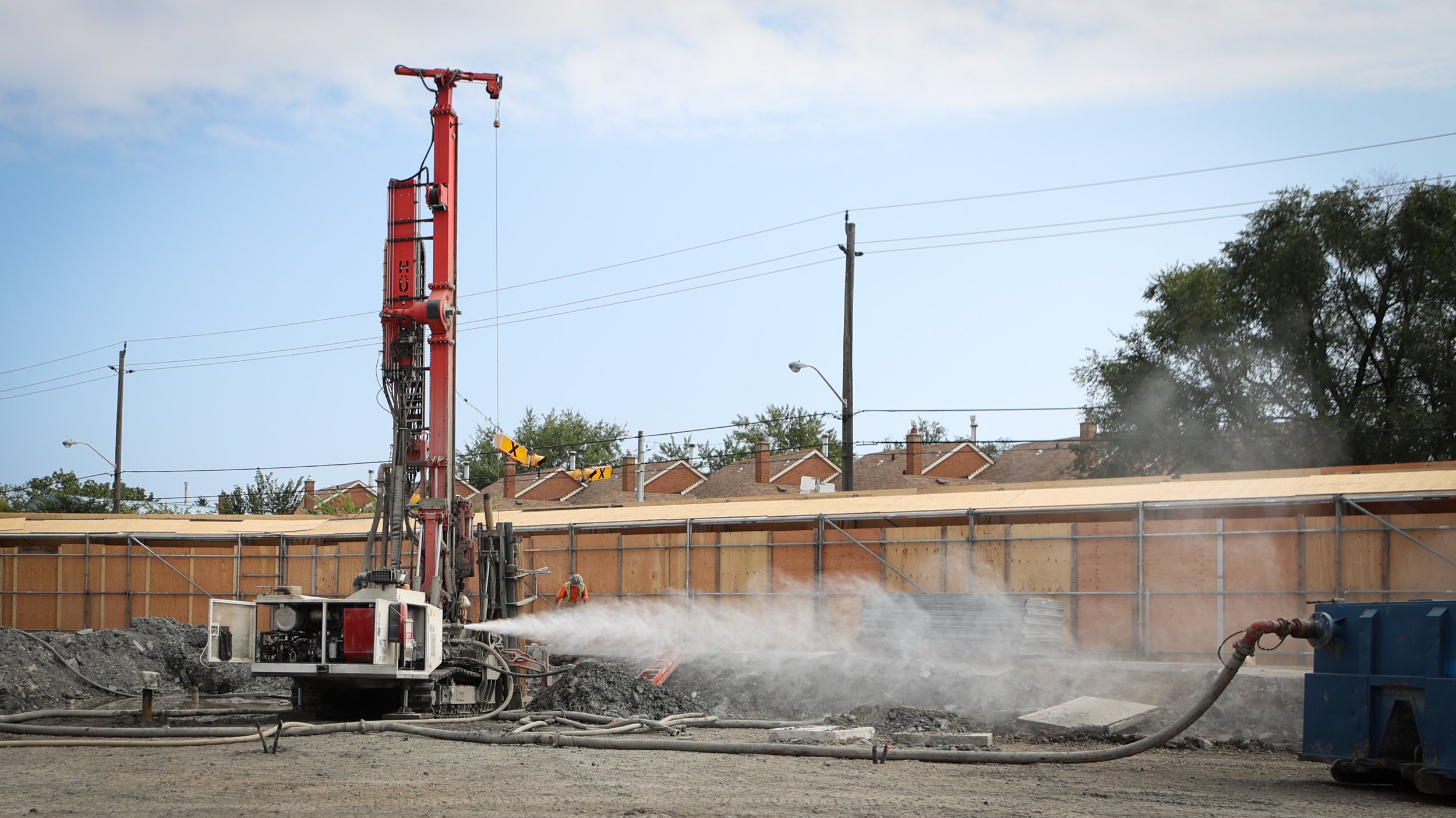Geothermal: Do It Yourself or Partner with an Expert?
Juan Di Nella, Unsplash, https://unsplash.com/photos/6H50XvowdcU
Governments across North America are imposing more aggressive energy and carbon reductions on new and existing buildings. As a developer, this means a major overhaul to your current building plans well before you even break ground. Cities like Toronto are setting their strictest targets yet, with version 4 of the Toronto Green Standard taking effect in May 2022. Other cities in Canada and the US will likely follow suit.
Building plans that rely on natural gas heating are going to face significant challenges to meet V4 of the Toronto Green Standard and any subsequent standards. Developers will have no choice but to start integrating practices that drastically reduce buildings’ carbon emissions. Cue geothermal, hailed as a growing trend for meeting emissions targets. Geothermal (also known as geoexchange) technology is a fossil fuel-free way to heat and cool buildings, making it an appealing choice for many developers.
Developers Have a Choice for Geothermal: Go It Alone or Partner Up
You’ve determined you need to add geothermal to your project. Now what? There are two ways developers could choose to make geothermal happen: do it themselves, or partner with a geothermal utility.
Developers know construction. Management of consultants, contractors, and trades is a major component of their business. Given this experience and expertise, it isn’t surprising that many developers might decide to undertake new geothermal projects on their own. Let’s break down the DIY model and compare it with the utility model.
A Typical Geothermal Project
Installing a geothermal system involves more steps than a conventional HVAC system. Engineers need to conduct a feasibility study and on-site assessment to determine the best way to integrate an efficient geoexchange system. Then the engineer needs to design the system, which is based on the building’s expected annual energy needs (taking mechanical and structural aspects, the building envelope, etc. into account). After the design has been approved, borefield drilling and pipe installation begins, and the completed system must be successfully connected to the building. Finally, the system needs to be monitored and maintained for maximum output and longevity.
Dangers of the Do-It-Yourself Model
On paper, nothing about the geothermal process looks like something an experienced property developer and their go-to contractors couldn’t handle. However, the underlying complexity and nuances of geothermal system design and construction means that mistakes can have a major impact on project timeline, budget, and possible performance.
Geothermal System Design
Geothermal systems are unlike any other systems most mechanical engineers typically design. Inexperienced or unspecialized engineers often design systems inefficiently, focusing solely on peak output rather than accounting for the aggregate loads for optimal system performance. This oversized and unoptimized design approach means a costlier and more complex installation—in other words, a higher price tag.
Geothermal Installation Challenges & Cost
Developers are expert project managers. If they weren’t, they’d never finish their building projects. But geothermal installations add a layer of complexity that most developers and their contractors underestimate. Lack of experience means they don’t know answers to questions like, “What is the best way to drill a borefield for this site,” or “When should installation begin to effectively coordinate with other trades and avoid construction delays?”
Not only that, but when developers undertake geothermal projects themselves, it results in a significant increase in construction costs because they have to front the capital to build the system. Further, unforeseen issues and inexperience in design and construction can lead to massive delays (and any associated penalties), as well as cost overruns, affecting developers’ margins.
System Management
Once a geothermal system is in place, it doesn’t function the same way as a gas line or electricity: the building owner doesn’t flip a switch and then presto, cheap, emission-free heating and cooling. Geothermal systems require continuous monitoring and maintenance to ensure optimized output and longevity. Without proper management, systems underperform and, in extreme cases, can become inoperable. In such cases, developers may incur significant costs to retrofit their buildings back to a conventional HVAC system.
Reputational (and Legal) Risk
Developers are contractually required to meet their obligations. When those include functional geothermal systems to provide adequate heating and cooling, inexperienced developers might be putting themselves at significant legal and reputational risk. For many developers, this fear is what holds them back from implementing geothermal at all. But there’s a better way, and that’s the geothermal utility model.
The Utility Model: Geothermal Simplified
As the name suggests, with the geothermal utility model, developers harness the benefits of geothermal energy in the same way as hooking up to a traditional utility. An energy as a service (EaaS) company completes all feasibility studies, designs the system, then installs and operates it, charging an energy fee like a traditional utility does. For most developers, this model provides significant advantages over the DIY model.
Construction Costs Controlled
Developers can reduce construction costs when using the geothermal utility model because they no longer have to acquire or install conventional HVAC equipment, namely cooling towers and boilers, or pay for geothermal installation. The geothermal utility company pays all costs associated with designing, building, and maintaining the geothermal system.
Geothermal Expertise Tapped
Geoexchange projects are complex. Many of the problems developers encounter when building systems themselves can be attributed to inexperience: improper design and integration, inefficient scheduling, and ineffective troubleshooting. Geothermal expertise mitigates these issues. An EaaS firm that has successfully completed hundreds of projects will be able to determine precisely how to design the system and solve any issues as they arise, with minimal impact on your construction timeline or budget.
Performance and Output Guaranteed
Unlike a DIY geothermal system, geothermal utility companies manage and maintain their systems, guaranteeing system output. Properly maintained geothermal systems have useful lives of 100 years or more. If the system does not perform as promised, building owners don’t pay. This means geothermal providers are incentivized to design optimal systems and operate them efficiently; otherwise, they would compromise their own capital investment, reputation, and future revenue potential.
Benefits Without the Risk
The increased cost and potential risk of the DIY geothermal model are what hold many developers back. But ignoring stricter emissions requirements and kicking the can down the road are no longer an option.
The solution: the geothermal utility model. With this model, developers meet even the strictest building requirements and futureproof their projects against a potential mechanical retrofit and costly upgrades. Geothermal providers like Diverso Energy have successfully completed hundreds of multi-family residential and commercial geothermal projects. They can leverage that expertise to make even the most complex projects a success. Plus, geothermal can help boost building appeal, increasing occupancy rates and marketability while minimizing financial exposure, since Diverso Energy pays for all the system costs.
About Diverso Energy
Diverso Energy is a geothermal utility company that designs, builds, owns and operates geothermal systems for multi-family, office, and institutional buildings. We currently serve nearly 3.5 million square feet of building space. We can help you design the optimal geothermal system for your project, reduce costs, and maximize return. Want to learn more? Get in touch with us today.





